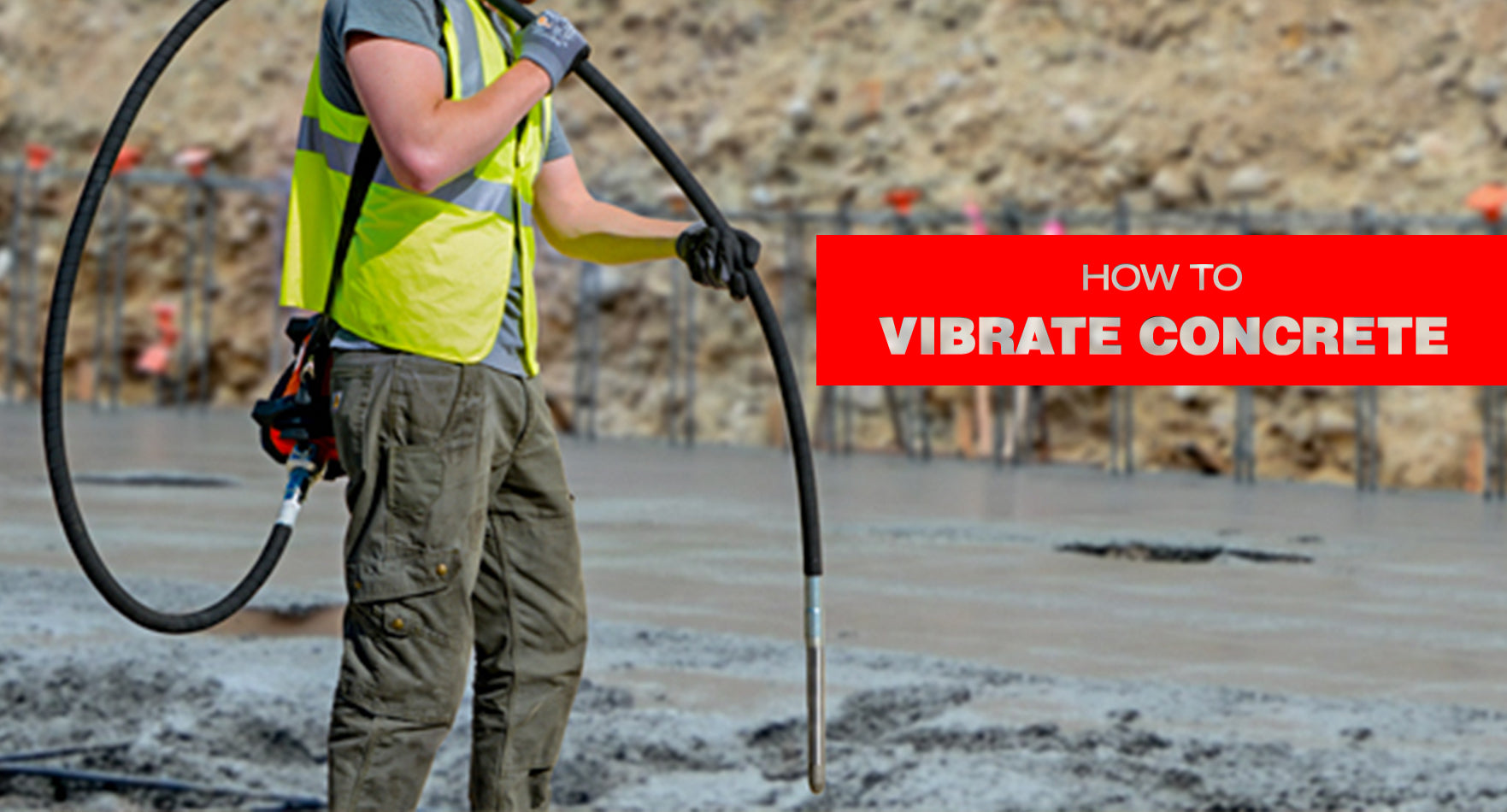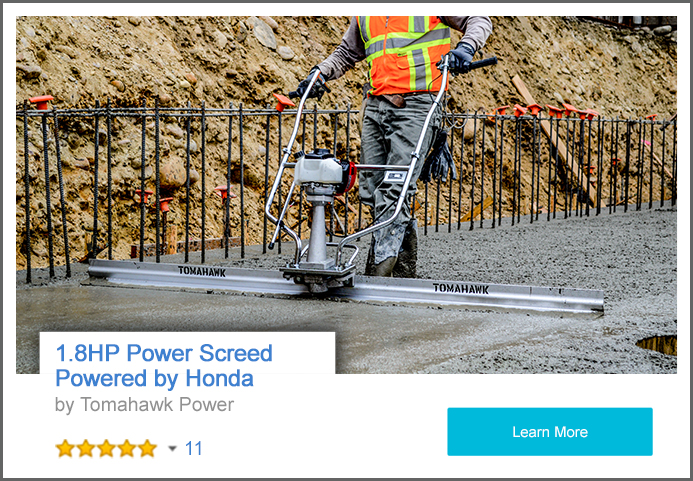There are a variety of tools that are required to complete any concrete job. One of the most important tools for any of these jobs is the concrete vibrator. Concrete vibrators are used to help consolidate concrete to prevent honeycombing, which will dramatically reduce the concrete structures durability.
Below are a few terms that will be mentioned over the course of this article.
Honeycombing: Used to describe the areas of the concrete that are coarse and stony, that resemble a honeycomb.
Consolidation: The process of vibrating concrete to rearrange the solid particles within the pour.
Columns: A structure used to carry compressive loads, which is composed of concrete and rebar.
Coarse Aggregates: Large coarse stones used for finishing, strengthening, and improving the durability of concrete.
Fines: Small aggregates that are less than 9.55 mm in diameter, like sand or crushed stone.
To begin, one must select the proper concrete vibrator motor, shaft, and head for a variety of structures that need to be vibrated. Usually electric vibrator motors are used, but if availability of power is limited then it is recommended to use a gas-powered vibrator motor. A motor with an rpm of 12,000 is recommended for the best results. The size of the head will depend on certain structures. For example, if the slab is for a shallow floor then a smaller head is used. When vibrating walls, columns and confined spaces, then a longer and wider head should be used. A rule when determining head size is that 1” diameter head will vibrate in a 6” radius, and a 2” diameter head will vibrate in a 12” radius. Another type of head to consider are rebar shaker heads, that use the rebar inside the structure as a head to consolidate the concrete.
Once the correct vibrator parts have been gathered, then consolidation can begin. Newly placed concrete must be vibrated as soon as possible. The concrete vibrator head will go in between rebar columns and should require the head to be submerged for 5 to 15 seconds. The vibrator head should not be forced down, it should only submerge itself by its own weight. Once the air bubbles in the spot being vibrated have stopped rising, slowly remove the head from the concrete and move on to the next space within the rebar. Keep in mind that the head must be fully submerged, as leaving part of the head unsubmerged may cause overheating of the concrete vibrator that can damage the head, shaft, and motor.
If there are coarse aggregates, or large coarse stones, on the surface of the concrete, then it requires more vibration. Coarse aggregates are large coarse stones that help provide compressive strength and improve durability to the concrete. Yet, these aggregates are preferable deeper and properly spread out within the concrete, as opposed to being concentrated on the surface or the bottom of the pour. If the concrete has been over vibrated then only fines, or small particles, can be seen on the surface while the aggregates will be found concentrated toward the bottom. Concrete honeycombing is mainly caused by the concentration of aggregates and fines.
Not too complicated, but a necessary process for any concrete job. The explanation may seem short, but that is all there is to properly vibrate concrete. It is that simple! Overall, vibrating concrete is a procedure that consolidates concrete by eliminating air pockets and distributes the solid particles within poured concrete properly to prevent honeycombing and improve the durability and quality of concrete.











